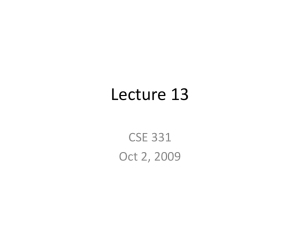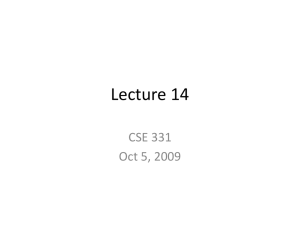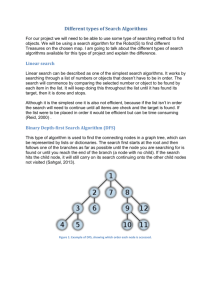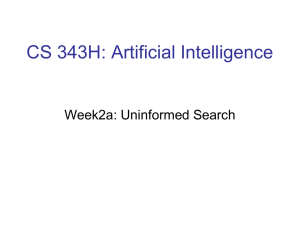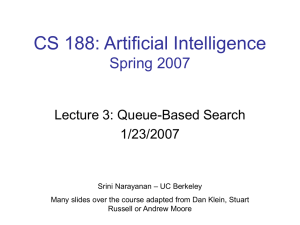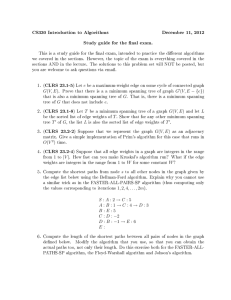CS330 Introduction to Algorithms October 22, 2012 Graph algorithms
advertisement
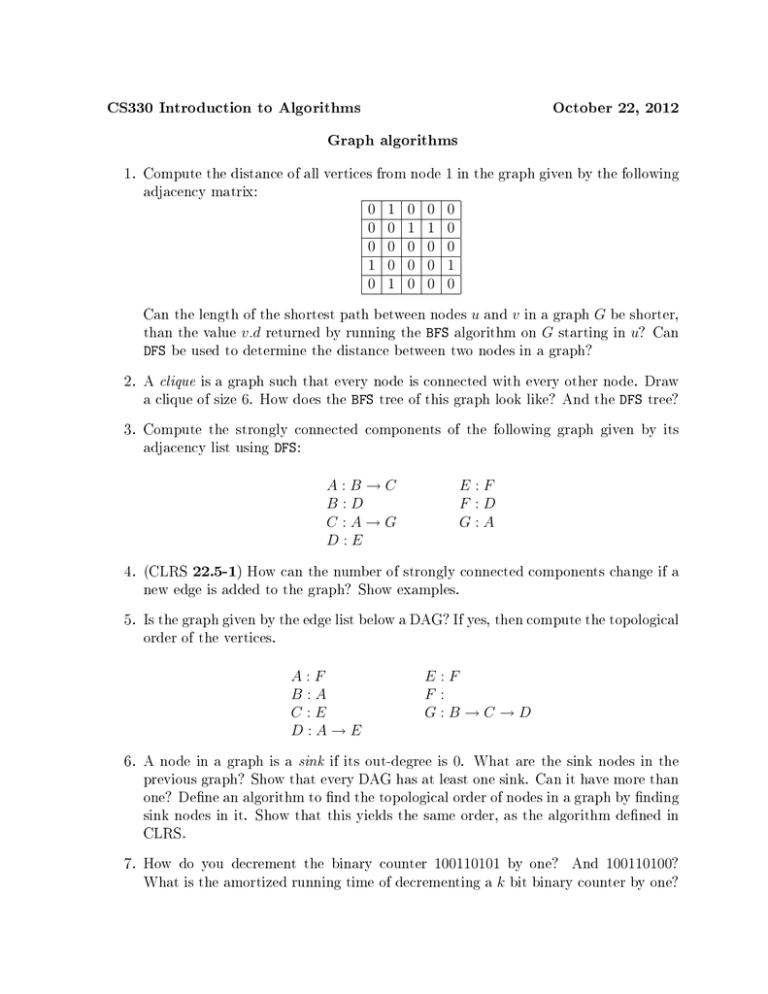
CS330 Introduction to Algorithms October 22, 2012 Graph algorithms 1. Compute the distance of all vertices from node 1 in the graph given by the following adjacency matrix: 0 0 0 1 0 1 0 0 0 1 0 1 0 0 0 0 1 0 0 0 0 0 0 1 0 Can the length of the shortest path between nodes u and v in a graph G be shorter, than the value v.d returned by running the BFS algorithm on G starting in u? Can DFS be used to determine the distance between two nodes in a graph? 2. A clique is a graph such that every node is connected with every other node. Draw a clique of size 6. How does the BFS tree of this graph look like? And the DFS tree? 3. Compute the strongly connected components of the following graph given by its adjacency list using DFS: A:B→C B:D C:A→G D:E E:F F :D G:A 4. (CLRS 22.5-1) How can the number of strongly connected components change if a new edge is added to the graph? Show examples. 5. Is the graph given by the edge list below a DAG? If yes, then compute the topological order of the vertices. A:F B:A C:E D:A→E E:F F : G:B→C→D 6. A node in a graph is a sink if its out-degree is 0. What are the sink nodes in the previous graph? Show that every DAG has at least one sink. Can it have more than one? Dene an algorithm to nd the topological order of nodes in a graph by nding sink nodes in it. Show that this yields the same order, as the algorithm dened in CLRS. 7. How do you decrement the binary counter 100110101 by one? And 100110100? What is the amortized running time of decrementing a k bit binary counter by one?
